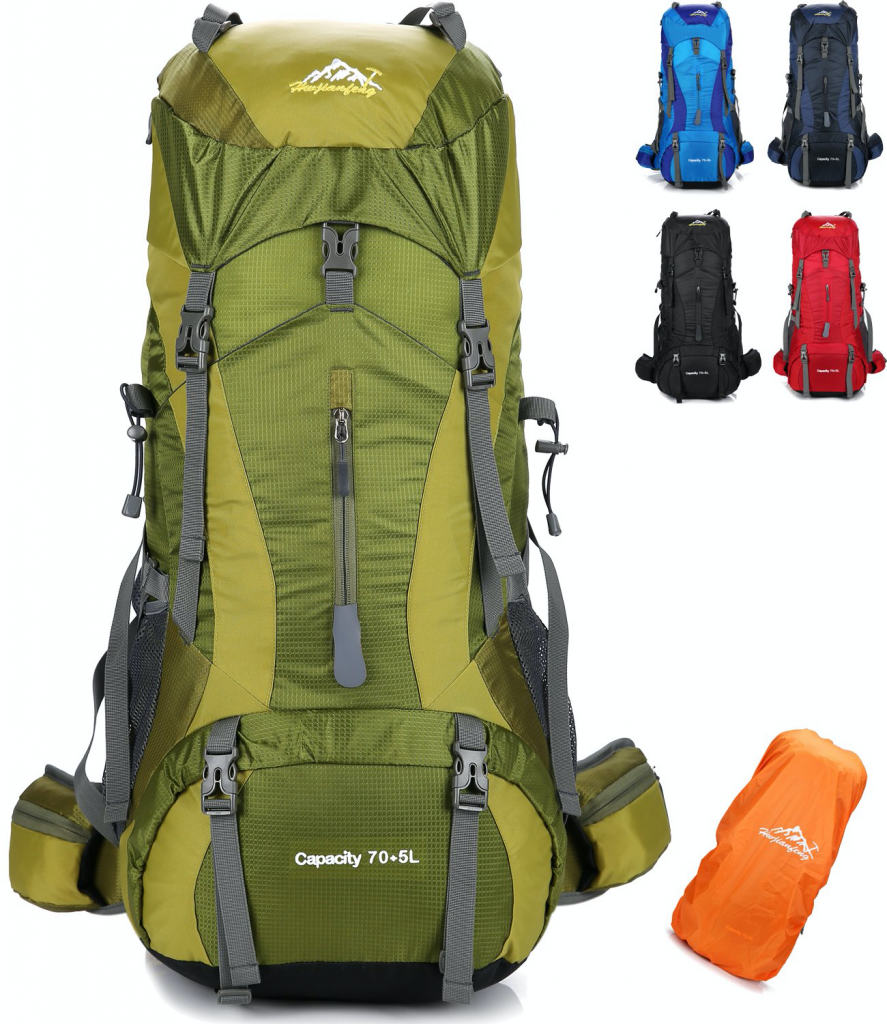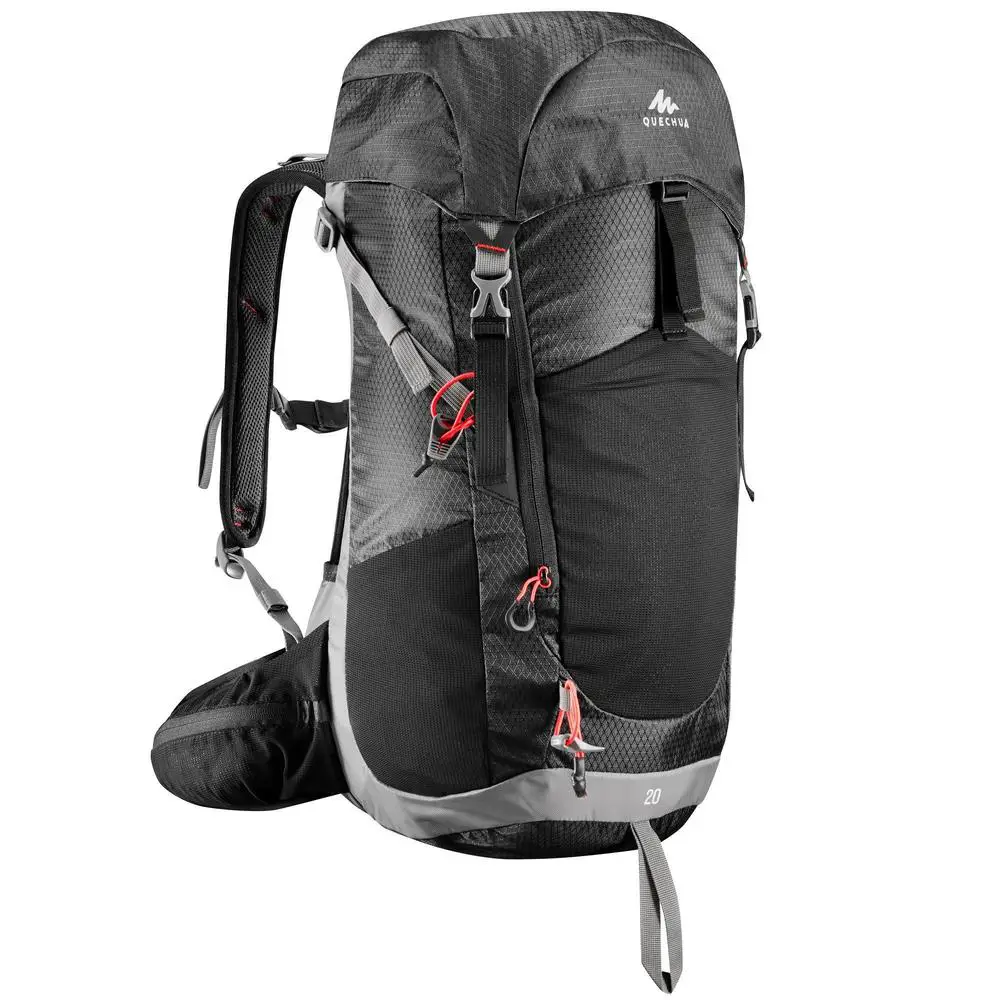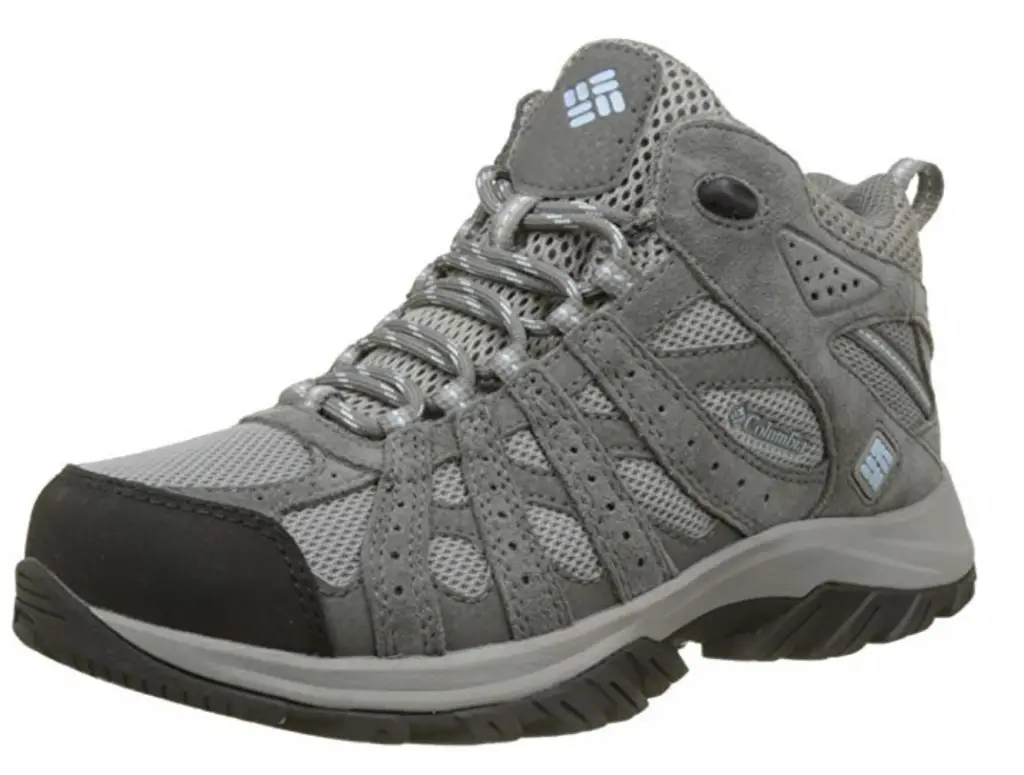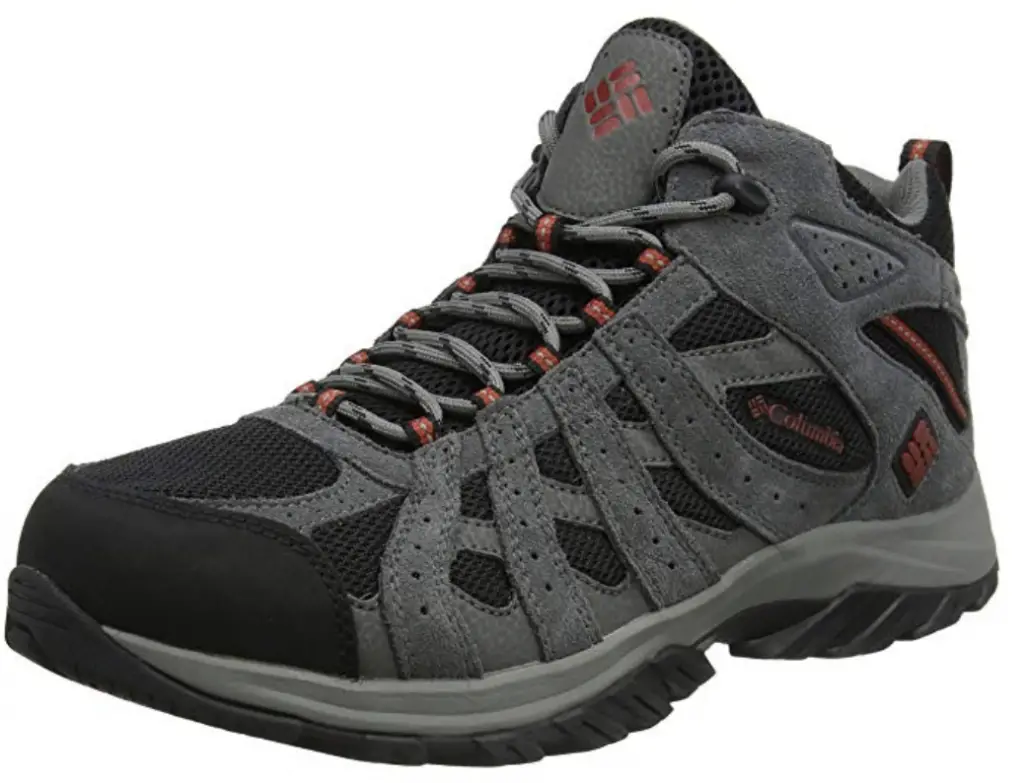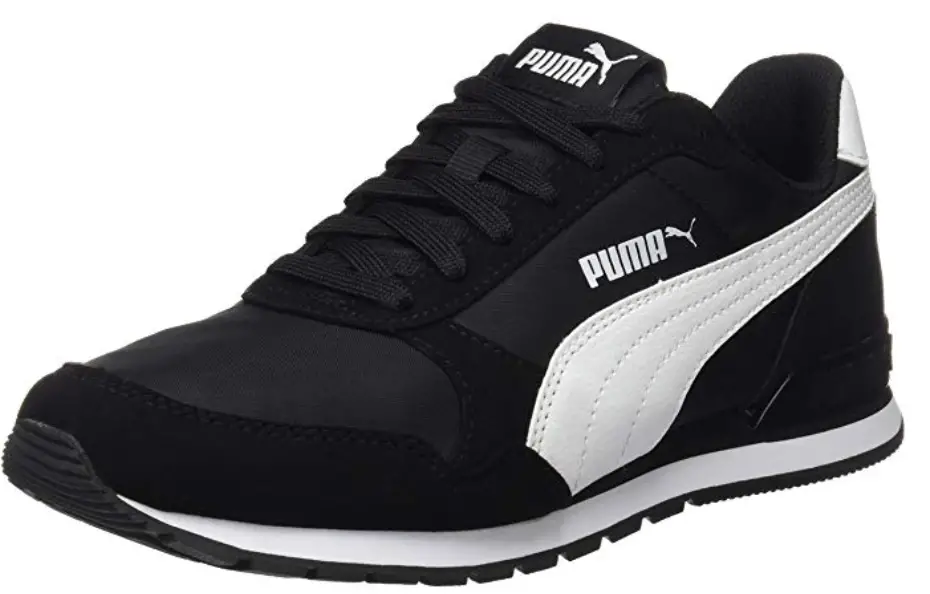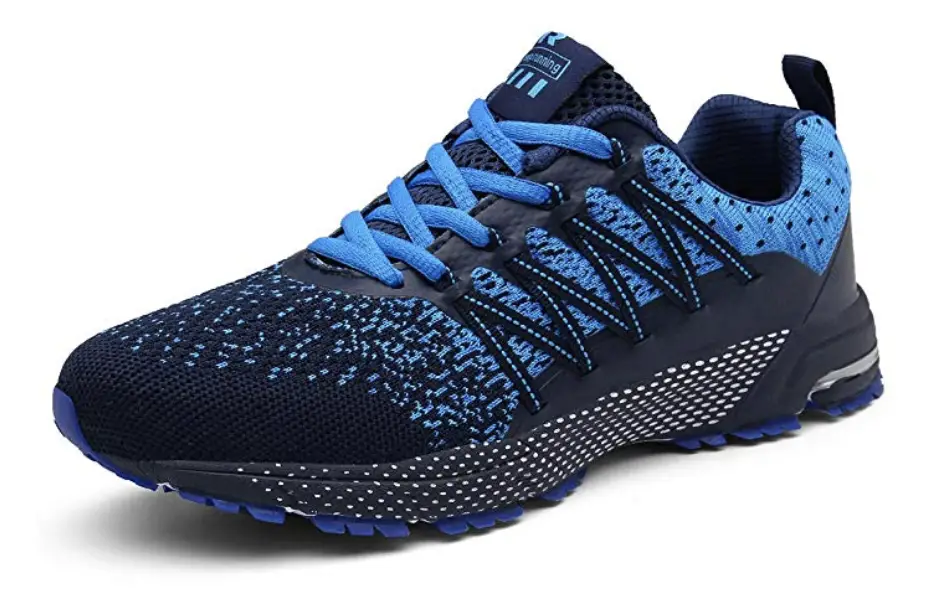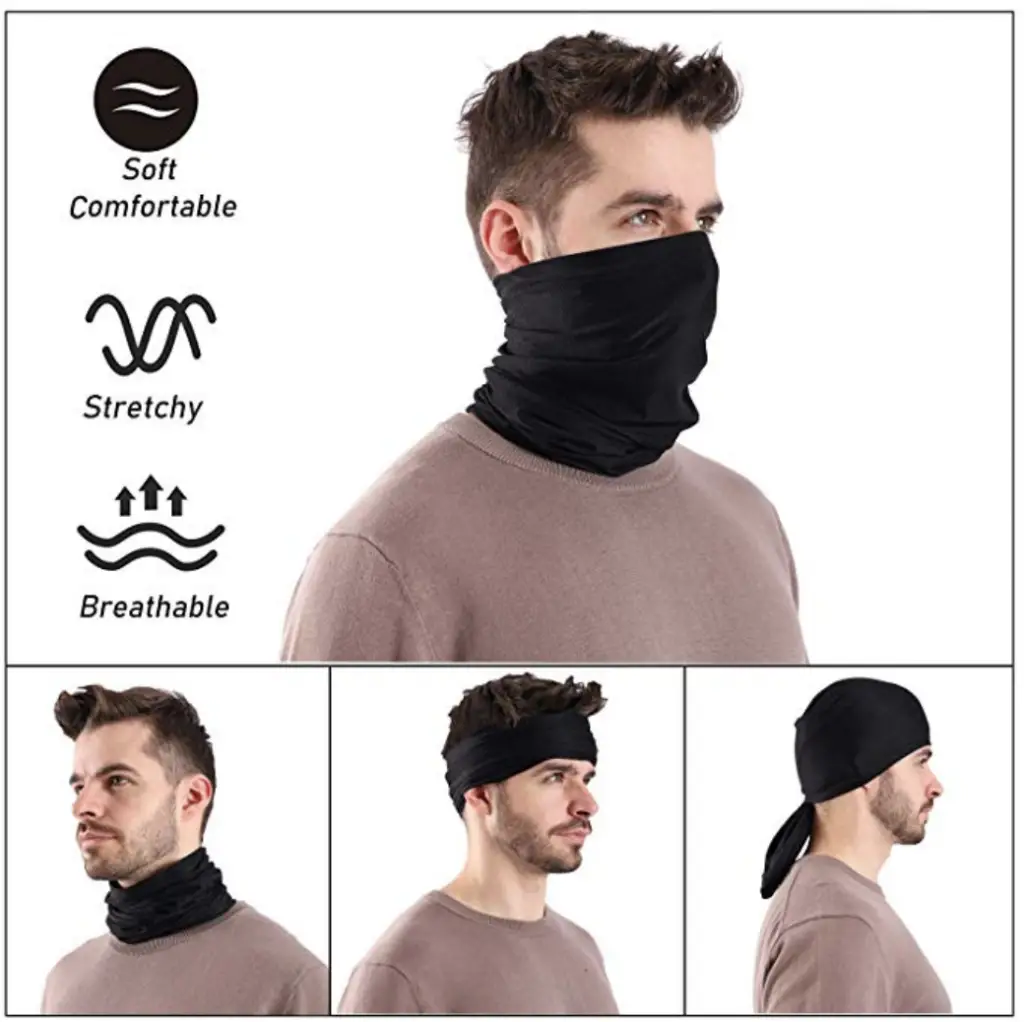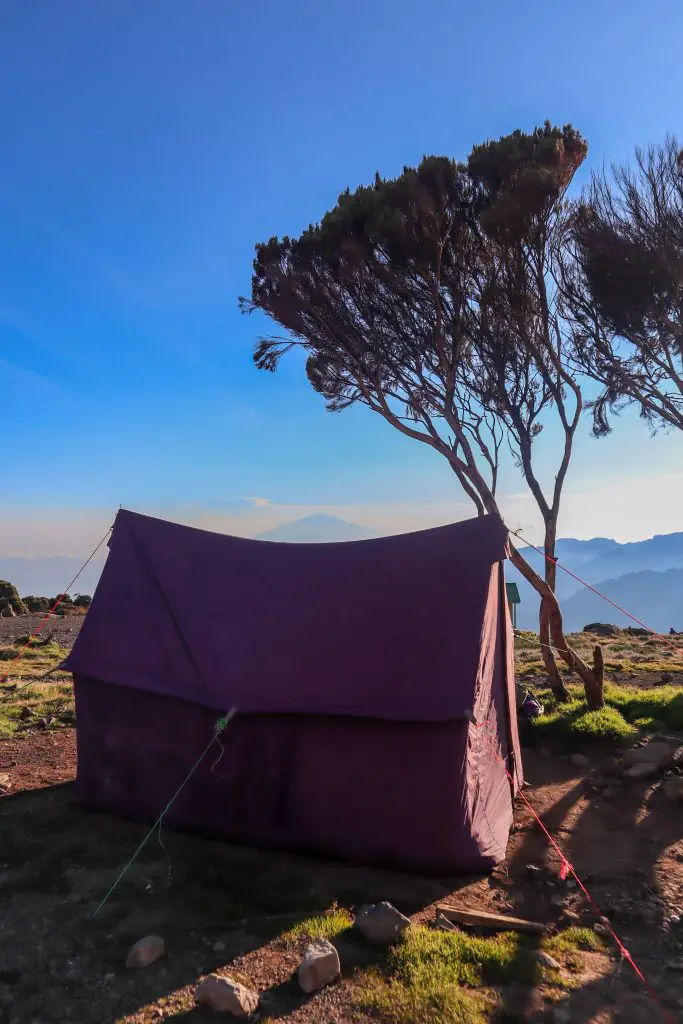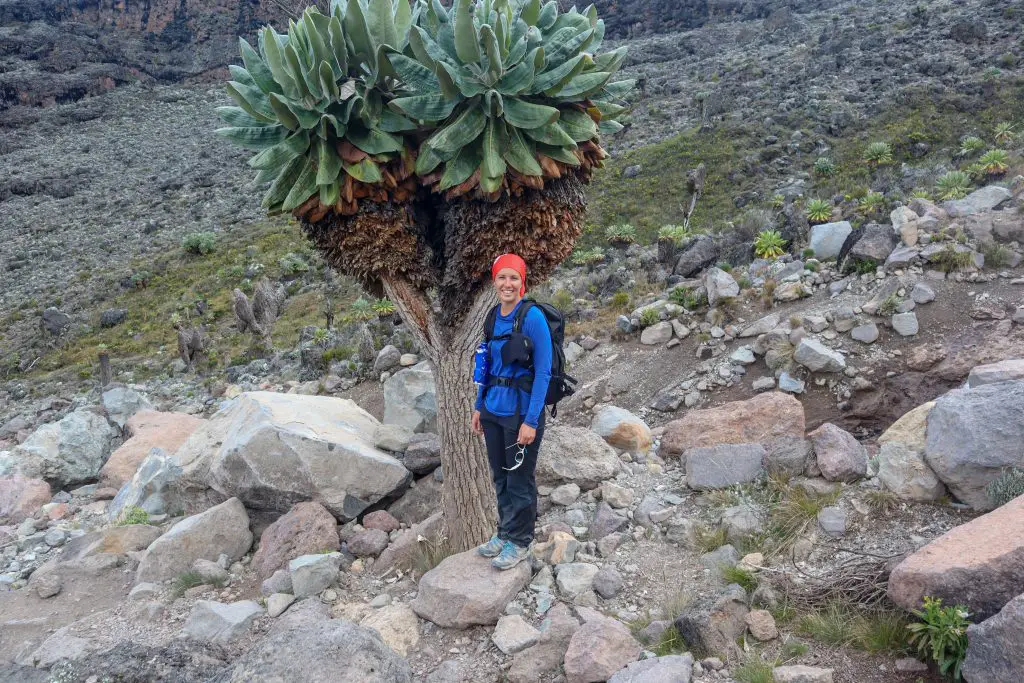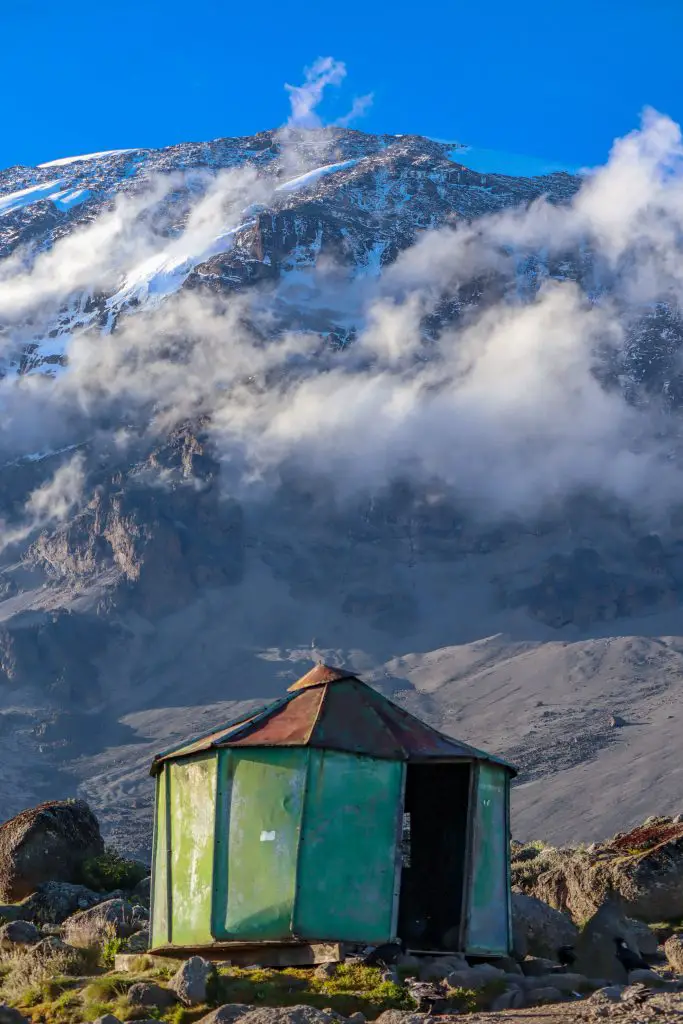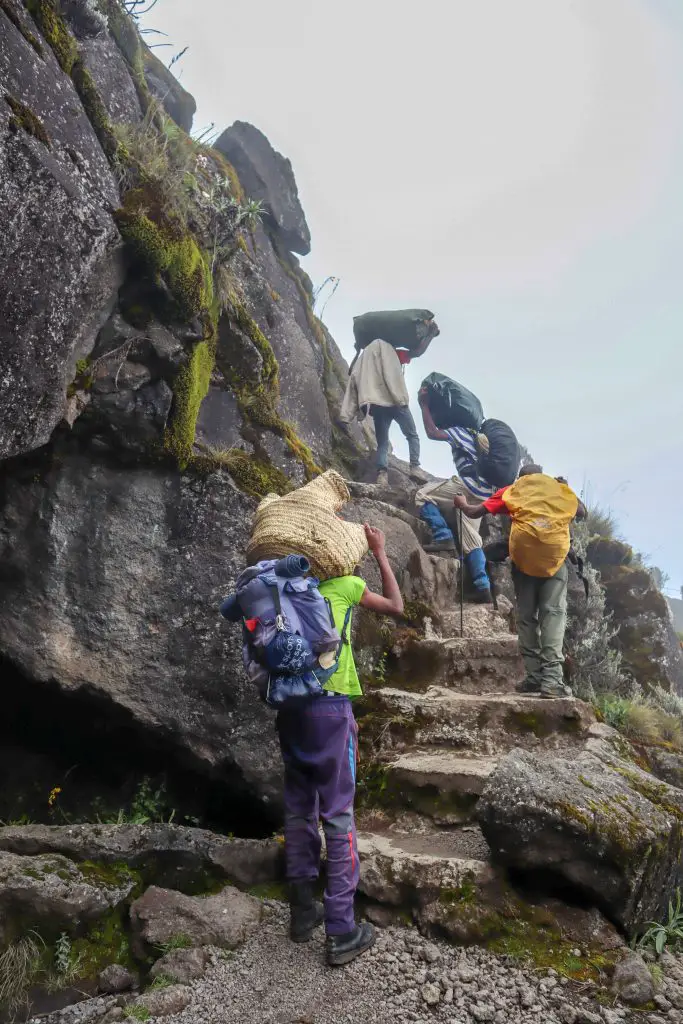The Kilimanjaro ascent is an experience for all mountain lovers. Indeed, with its 5,895m, it is the highest peak in Africa. To reach the top is to be on the roof of Africa and it is an extraordinary feeling.
I climbed Kilimanjaro last June and it was a magical experience. I went through the Machame route in 7 days.
With good preparation, the summit of Kilimanjaro is accessible to everyone.
But you still have to be well prepared and bring the perfect equipment to succeed in this ascent.
Obviously, the equipment necessary for such an ascent varies according to the duration of the trek and the conditions under which it will be carried out.
The list of necessary equipment corresponds in particular to a 7-day camping ascent. Depending on the duration of your trek you will need more or less business.
Which backpack to bring for the Kilimanjaro?
To climb Kilimanjaro, you will need two bags.
No, don't worry, you won't carry two bags yourself on your way to Kilimanjaro!
- A big bag from about 40L to 70L: this bag will be carried by the porters (yes they are really impressive). This bag will be carried daily for the porters and they will take it to the next camp. Inside this bag, you will have all your belongings except the ones you need during the day. Also be aware that your bag should not be too heavy. The carriers are weighed at the start of the trek and the weight they carry should not normally exceed 15 KG. So take only the bare essentials with you.
- A small bag from 15L to 40L: this will be the bag you will wear during the day. It is therefore advisable not to overload it either so as not to get too tired. Take the bare essentials with you once again. For example, you will put your water bottles, your lunch box, a cereal bar if necessary, a jacket for the day and your camera.
For both bags, do not forget to bring rain protection. These will be very useful and will protect your bags!
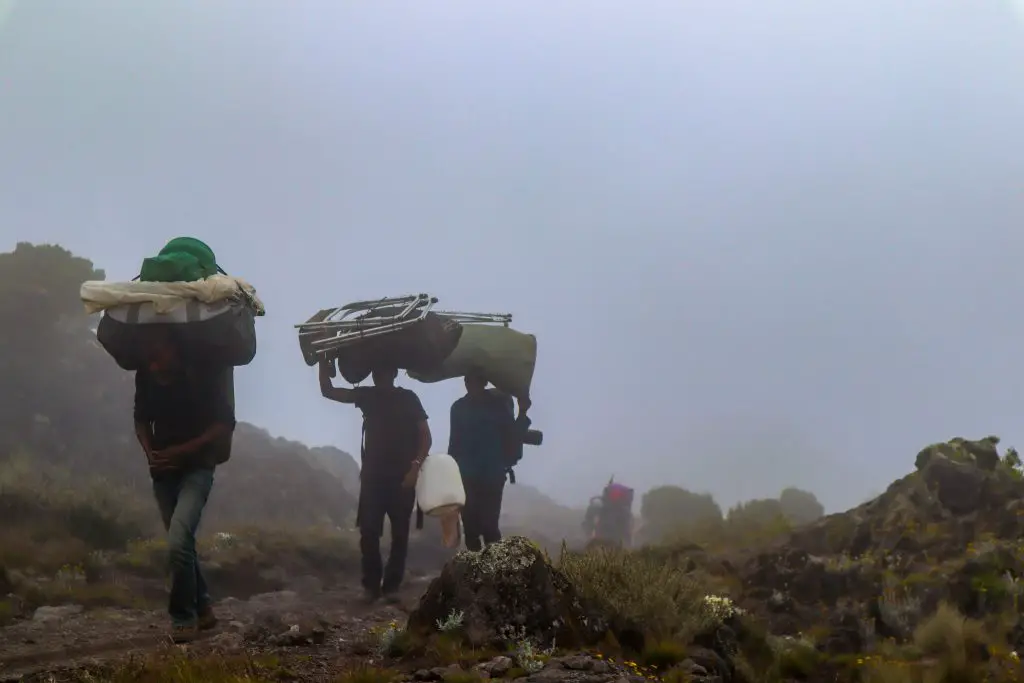
Which sleeping bag to bring for the Kilimanjaro?
Concerning down, each person can more or less easily resist the cold. Also, depending on the time of the year you climb Kilimanjaro, temperatures may vary.
However, I still advise you to bring a sleeping bag that is resistant to cold temperatures. Take a down that goes to at least -10 ° C / -20 ° C.
When I ascended in early June, I had a down temperature of -10 ° C. I'm not usually too cold, but I can tell you that the nights have been very cool. I think my down was not of the best quality but I quickly got cold at night.
If you are ever cold, I advise you to heat water in the evening before going to bed and put your water bottles in your sleeping bag as a hot water bottle. It feels so good!
Also, I advise you to bring a meat bag that you can easily slip into your sleeping bag. A meat bag doesn't take up much space but it can be very valuable and useful.
For the more cozy ones, you can bring a pillow! Try to bring some that don't take up too much space… Don't forget that all the extras you bring will be worn by the porters…
Similarly, some people choose to bring their own air mattresses to sleep. If this is the case, take one that is easy to fold and does not take up too much space.
Depending on the options you have chosen, small mattresses will be provided.
What shoes should I bring for the Kilimanjaro?
Shoes are a very important equipment when trekking.
The ascent to the kilimanjaro is a long and long hike.
You will therefore need two pairs of shoes:
- A pair of hiking boots: take shoes that you are used to walk with. Indeed, leaving with new shoes can make you blisters and this can be annoying since you will be walking for several days at a time. So take shoes that you know well and are comfortable with.
- A pair of sneakers or tap shoes: this second pair of shoes will be useful in the evening after your hiking day. Indeed, take a pair of shoes in which you are very comfortable, which do not hold you too tight. If you are not chilly at all you can take some tap dancing with you. But be aware that with altitude, the higher the campsites are, the colder your feet will be in the evening.
What technical clothes should I bring for the Kilimanjaro?
The clothes to bring for the Kilimanjaro ascent vary according to the season in which you ascend but also according to the duration of this trek.
However, a large part of the clothes to take away are the same, what differs significantly is the quantity.
The best way to dress for the Kilimanjaro ascent is to put several layers on. It is in a way the technical onion!
Indeed, the temperatures will vary throughout your trek so it is better to be prepared for all situations.
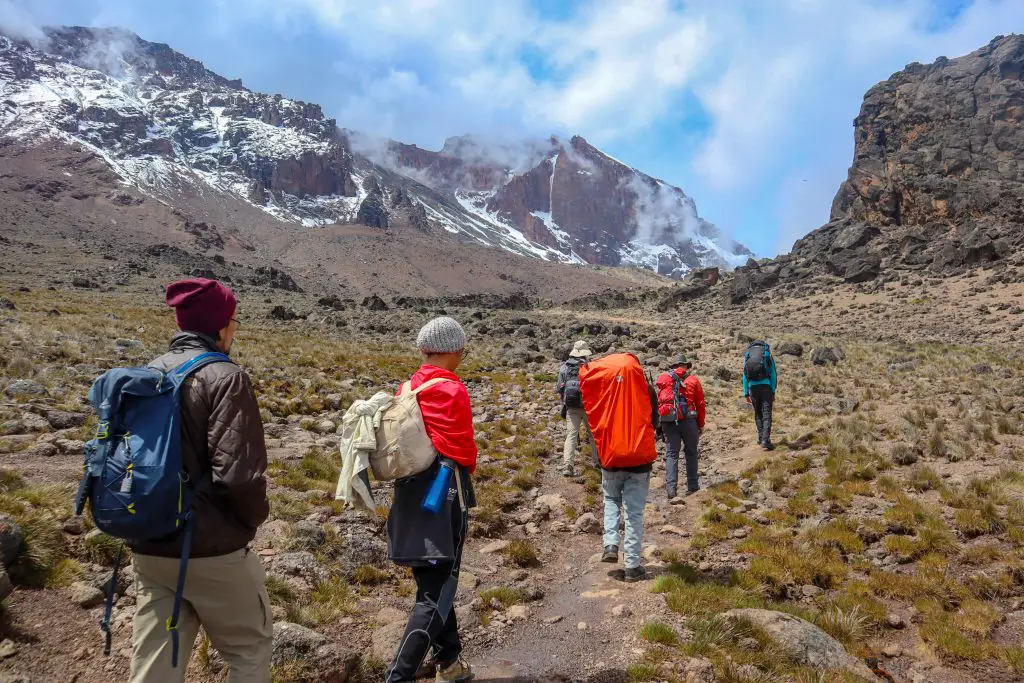
Top clothes to bring for the ascent of Kilimanjaro
- Breathable short sleeve t-shirt: the first and last day of the trek are the hottest days. It is therefore advisable to take at least one short sleeve t-shirt with you.
- Breathable long-sleeved t-shirt: I advise you to take 2 t-shirts like this in order to be able to change in the middle of the trek (or to have a clean t-shirt in the evening). This kind of t-shirt can be very useful. It will also serve as a first layer when it gets colder.
- Polar: I also advise you to bring one or two small polar fleeces with which you can walk when temperatures cool down.
- A small down jacket: a small breathable down jacket is essential to be able to walk towards the last days.
- A big down jacket: it is an essential for the final ascent. During the final ascent, depending on your tolerance to the cold, you will have the possibility to wear: your long-sleeved t-shirt + a fleece + the small down jacket + your big down jacket. Also, the big down jacket can be worn in the evening at the campsites so that you don't get cold.
- K-way / waterproof / windproof: This is essential in case of rain to protect you from water.
Bottom clothes to bring for the ascent of Kilimanjaro
- Shorts: for the first and last day it can be hot so you will be more comfortable with shorts.
- Gold jogging leggings: this can be used in the evening to be more comfortable but also at night to sleep.
- Hiking pants: one or two pants depending on your preferences. Personally, I spent most of my days with these pants alone.
- A sticking / legging: to put under your hiking pants around the last few days to keep warm.
- Rainproof pants: in case of rain it may be interesting to have a rainproof sock so you don't get wet because your clothes will hardly dry out from one day to the next.
- Socks: two or three pairs of hiking socks (semi-thick) + a large pair of socks (ski socks styles) for the evening but also to be able to put two layers of socks for the final ascent.
Be aware that for the final ascent, temperatures often reach between -10 ° C and -20 ° C, so cover yourself enough. Especially since at the speed with which you climb, once you reach a certain altitude, it is difficult to warm up.
What technical equipment should I bring for the Kilimanjaro?
Among the equipment that must be brought for the ascent of Kilimanjaro are:
- Two pairs of gloves: indeed, you need a small pair of gloves (silk gloves) as well as a large pair of gloves or mittens for the final ascent.
- Has beenie: the higher you climb, the colder you will be. You will be happy to have a good hat to protect your head and ears.
- A cap or a hat: for the sun because even with altitude the sun can hit hard so protect your face
- hiking sticks: sticks are not mandatory. However they can be very useful for the day of the final ascent but also for the descent to protect your uhh knees a little bit.
- A pair of gaiters: a pair of gaiters can be useful for rain with mud but also for ascent and descent. Indeed, a pair of gaiters will prevent you from ending up with tons of small stones in your shoes.
- A neck band: although not specifically recommended as a general rule, I highly recommend this accessory. Indeed, its usefulness is multiple: neck collar, head protection but also neck and nose cover. Indeed, during the descent, a lot of dust is raised. Thus, having the opportunity to protect your mouth and nose is very pleasant.
- Headlamp: this is essential for the final ascent as it is done at night (from midnight to 7 am). Also, this flashlight will be useful in the evening in the camp. Don't forget to bring batteries or charge the battery properly before leaving.
- Water bottles: it is advisable to take 2 water bottles. These canteens will be filled every day at the camp for the next day. Please note that plastic bottles are not allowed in Kilimanjaro National Park. Also, if possible, opt for an aluminum bottle that can also be used as a hot water bottle at night to warm you up. Don't forget to drink plenty of fluids to overcome the acute mountain sickness.
- Sunglasses: to protect your eyes this is an essential accessory.
- Finger and foot warmers: for those who are more sensitive to cold, finger warmers may be necessary during the final ascent as temperatures can drop to -20 ° C.
- Cereal bars, energy bars ... : eating bars can be great on long days or on the final ascent when you need strength
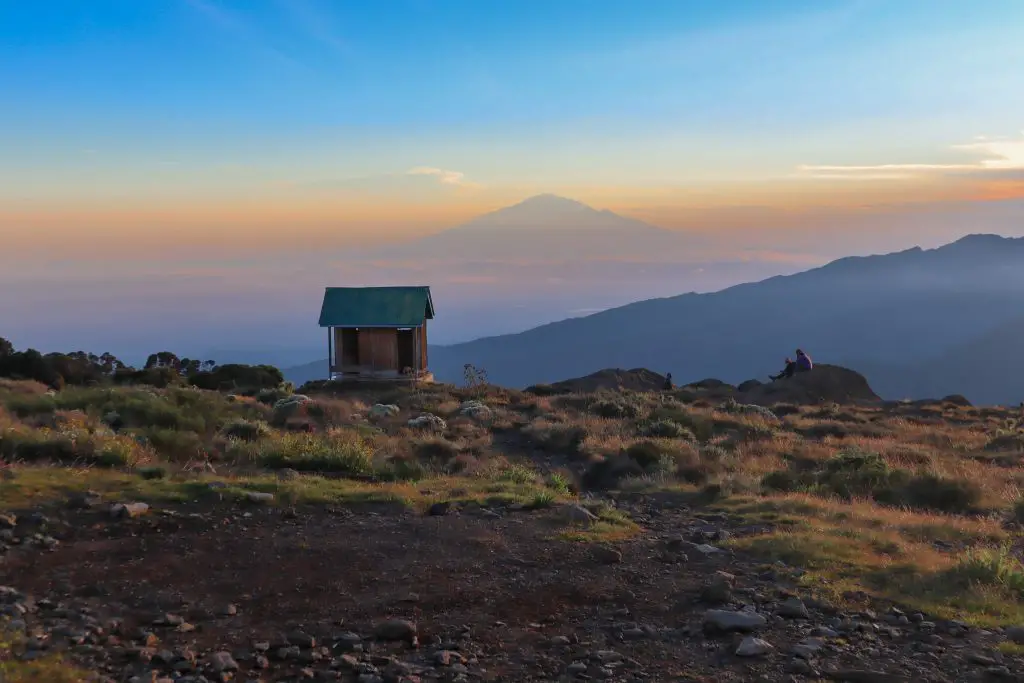
What hygienic and health supplies to bring for the Kilimanjaro?
Be aware that hygiene during the ascent of Kilimanjaro may be poor depending on the options you have taken.
Indeed, during the trek, there is no shower so hygiene remains precarious.
It is therefore advisable to bring a minimum of hygienic supplies but also only the bare essentials.
- Basic toilet kit (toothbrush, toothpaste etc.)
- Toilet paper / tissues
- Intimate wipes: I recommend intimate wipes to refresh you in the evening or in the morning if you don't have a shower. Intimate wipes really don't take up much space.
- Lipstick: it can be very cold and with the wind you can quickly have chapped lips
- ear plugs: to spend peaceful and quiet nights, nothing beats good earplugs.
- Sunscreen: essential element to protect against the sun which can hit hard enough during the day.
- pharmacy kit: bandages, medicines for headaches, for diarrhea, anti-malaria treatment according to the trip, diamox for those who want etc.
What electronic and photographic equipment should I bring for the Kilimanjaro?
For photography lovers and those who wish to bring back memories of their unique experience, I advise you to bring the following equipment.
- To mobile phone: for those who wonder, surprisingly, at some camps it is possible to receive network reception. However, these places are rare.
- Go pro: The Go Pro is a superb action camera that can withstand extreme weather conditions and temperatures.
- Camera and its lenses: for the big fans of photography, I can't advise you to bring your camera with the lenses necessary to capture these wonderful moments on the roof of Africa.
- Batteries: obviously, you should expect this, there are no electrical outlets on the mountain to recharge your electronic devices. I therefore advise you to bring enough extra batteries for your electronic devices.
- External battery or solar external battery: an external battery will allow you to charge your electronic devices if you run out of battery power.
Remember that with altitude and cold, your electronic devices can quickly lose their autonomy. Indeed, a battery at 4,000m altitude empties much faster than a battery at 100m altitude.
To give you an example, I left with my go pro and my camera. I had 3 batteries for the go pro and 3 batteries for the camera. This was necessary but sufficient. Also I had a small external battery that was very useful to me.
If you liked this article, I recommend one of the following articles on the same topic:

